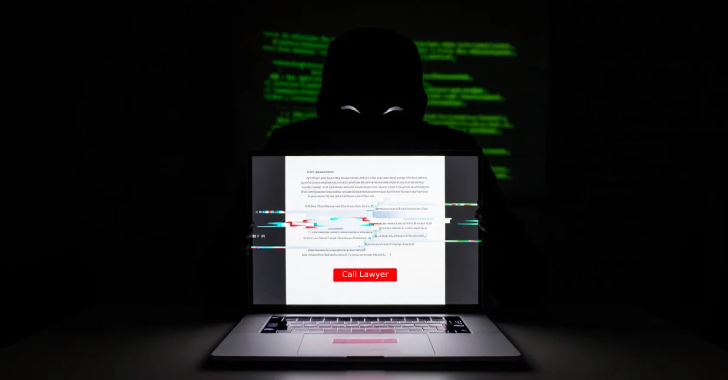In an ever-evolving cybersecurity landscape, organizations continue to face increasingly sophisticated and persistent cyber threats. To effectively defend against these threats, it is crucial to understand the attacker’s modus operandi, predict their actions, and use that knowledge to proactively fortify defensive strategies.
Two existing frameworks, the Cyber Kill Chain and the MITRE ATT&CK Framework, provide valuable insights into the attacker’s mindset and the tactics they use to launch an attack. Along with these frameworks, attack path analysis, or the ability to automatically detect and simulate all possible pathways of a cyberattack, serves as a critical component. It enables organizations to zero in on risk areas, minimize as many attack vectors as possible, and augment their overall security posture.
This blog explores the interplay between these frameworks and emphasizes the importance of attack path analysis in bolstering cybersecurity defenses.
The Cyber Kill Chain & the MITRE ATT&CK Framework – Complementary Yet Distinct
The Cyber Kill Chain framework outlines the phases an attacker typically follows during a cyber intrusion by categorizing 7 cyberattack behaviors into sequential tactics, from reconnaissance, weaponization, delivery, exploitation, installation, and command & control to actions on objectives.
Complementing the Cyber Kill Chain, the MITRE ATT&CK framework is a comprehensive and curated knowledge base of adversarial tactics and techniques that are used by attackers to perpetrate attacks.
The ATT&CK Framework includes various matrices that cover different tactics and techniques used in an attack. Each “tactic” describes the goal of an attack, while the “techniques” describe the ways attackers can achieve that goal. Currently, there are 12 tactics in the entire framework and over 300 techniques, with each technique mapped to one or more tactics.
Cisco
Figure 1: The MITRE ATTACK Framework tactics and the phases of the Cyber Kill Chain
While complementary to one another, the Cyber Kill Chain and the MITRE ATT&CK Framework have distinct focuses and approaches.
The Cyber Kill Chain emphasizes the sequential progression of an attack, allowing organizations to understand each stage and implement proper defensive measures. It applies the military concept of a kill chain model to a cyberattack and is designed for defenders to use the kill chain as the attacker’s playbook and interrupt the attack or “break the kill chain” during each phase.
In contrast, the MITRE ATT&CK Framework is not limited to a sequential view. It catalogs and organizes attacker tactics, providing a comprehensive taxonomy of techniques and behaviors. It enables organizations to align their defense strategies with known threats, offering insights into a broad range of techniques attackers may employ to carry out an attack. The MITRE ATT&CK framework is helpful to threat hunters, red teamers, and security architects and admins who design and enforce security policies and controls.
To sum up, while the Cyber Kill Chain offers a linear perspective of an attack, the ATT&CK Framework provides a more comprehensive and non-linear view. When used together, these frameworks can provide a holistic understanding of the attacker’s mindset, methodology, and potential attack paths.
Bringing the Two Together with Attack Path Analysis
Attack path analysis serves as a crucial component in integrating the Cyber Kill Chain and the MITRE ATT&CK Framework. It plays a significant role in threat modeling by providing valuable insights into the potential attack paths that adversaries may use. The analysis combines the sequential perspective of the Cyber Kill Chain with the comprehensive taxonomy of attacker tactics and techniques provided by the ATT&CK Framework.
Using the cyber kill chain to determine different starting points from where potential attack paths can arise within an environment, it incorporates knowledge from the MITRE ATT&CK Framework to understand the specific techniques that an attacker may employ at each phase. This aligns the observed attacker behaviors and tactics with the identified attack paths.
By availing attack path analysis, security teams can pinpoint realistic and targeted attack scenarios during the threat modeling process that could lead to the compromise of high-value assets or cause considerable damage. The risk prioritization enabled by the analysis allows security teams to focus their resources and efforts on securing the most vulnerable and impactful paths. Visualizing attack paths allows security teams to implement targeted security controls and countermeasures to mitigate the identified risks and assess the consequences of a successful attack.
When security teams focus their attention on the most significant risks and distribute resources accordingly, they are also in a better position to confirm the effectiveness of existing security controls and defenses.
Panoptica’s Attack Path Analysis Capability
Panoptica‘s attack path analysis is unique in the industry. Using techniques such as comprehensive attack path analysis, root cause analysis, and dynamic remediation, it uncovers new and known risks by looking through the lens of a potential attacker and stores all findings in a graph database.
This approach eliminates the need to spend precious time building queries to understand what is relevant in the attack path analysis, reducing time to value to a couple of weeks compared to alternative approaches that take several months. The graphical format easily visualizes contextual relationships between threats, potential attack paths, and levels of severity.
Using its attack path analysis engine, Panoptica surfaces a comprehensive view of the attack landscape comprised of thousands of security risk findings across various assets. Then, with its out-of-the-box remediation guidance provided in multiple frameworks, it reduces the caseload of these security findings to a handful of remediation actions. This enables faster time to remediation for SecOps teams.
A Comprehensive Approach to Strengthening Cybersecurity Defenses
The synergy between the Cyber Kill Chain, MITRE ATT&CK Framework, and attack path analysis empowers organizations to develop robust defensive strategies, enhance threat visibility, and improve security posture.
In the face of an ever-changing threat landscape, leveraging insights from both frameworks and availing attack path analysis provides organizations with a comprehensive approach to strengthening their cybersecurity defenses.
Network Security






